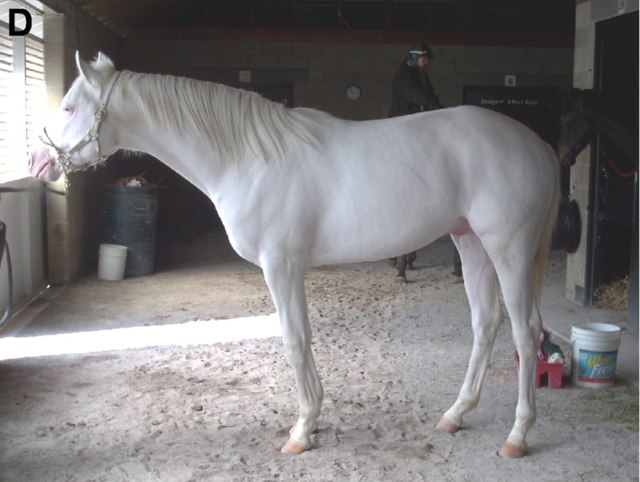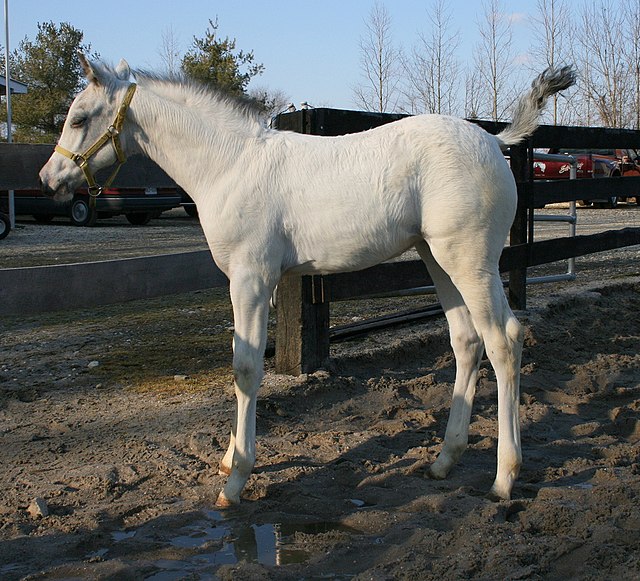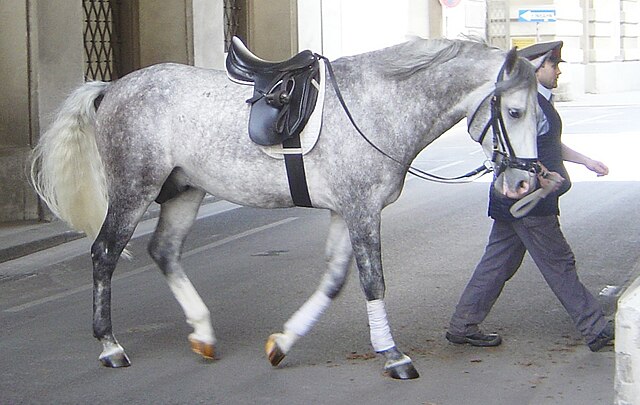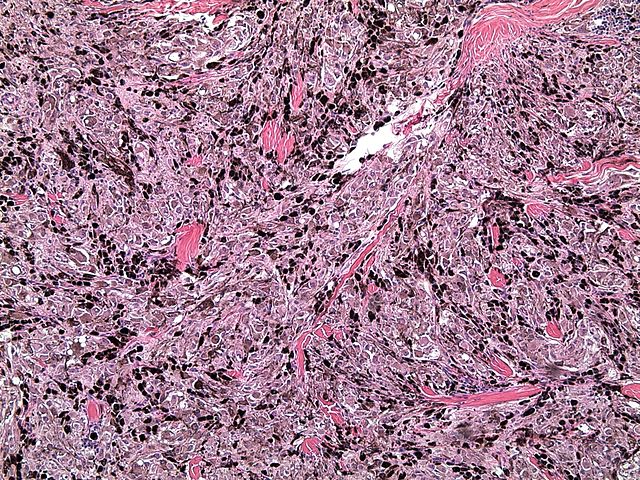A white horse is born predominantly white and stays white throughout its life. A white horse has mostly pink skin under its hair coat, and may have brown, blue, or hazel eyes. "True white" horses, especially those that carry one of the dominant white (W) genes, are rare. Most horses that are commonly referred to as "white" are actually "gray" horses whose hair coats are completely white. Gray horses may be born of any color and their hairs gradually turn white as time goes by and take on a white appearance. Nearly all gray horses have dark skin, except under any white markings present at birth. Skin color is the most common method for an observer to distinguish between mature white and gray horses.
Dominant purebred white stallion
True white horses have pink skin and white coats, and many have dark eyes, as here.
This white Thoroughbred carries W14, one of the forms of dominant white.
This "white-born" or "fewspot" Appaloosa foal has a mostly pink-skinned white coat.
A gray horse has a coat color characterized by progressive depigmentation of the colored hairs of the coat. Most gray horses have black skin and dark eyes; unlike some equine dilution genes and some other genes that lead to depigmentation, gray does not affect skin or eye color. Gray horses may be born any base color, depending on other color genes present. White hairs begin to appear at or shortly after birth and become progressively more prevalent as the horse ages as white hairs become intermingled with hairs of other colors. Graying can occur at different rates—very quickly on one horse and very slowly on another. As adults, most gray horses eventually become completely white, though some retain intermixed light and dark hairs.
A young gray Lipizzan horse. Grays are typically born a darker color, and their hair coat will be pure white before they are 10 years old as they age
A gray mare with suckling foal. The mare has a white hair coat, but the underlying black skin still confirms that she is a gray and not white. The light hairs around the foal's muzzle and eyes indicate that it will gray like its mother. Not all foals show signs of graying this young.
Perianal gray horse melanoma
Perianal gray horse melanoma, histology of tumor








